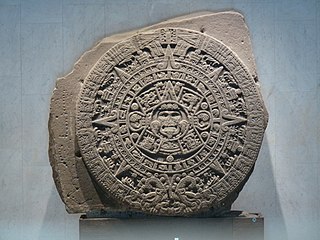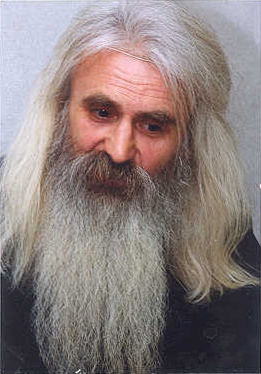Related Research Articles

Chechnya, officially the Chechen Republic, is a republic of Russia. It is situated in the North Caucasus of Eastern Europe, close to the Caspian Sea. The republic forms a part of the North Caucasian Federal District, and shares land borders with the country of Georgia to its south; with the Russian republics of Dagestan, Ingushetia, and North Ossetia-Alania to its east, north, and west; and with Stavropol Krai to its northwest.

Chinese art is visual art that originated in or is practiced in China, Greater China or by Chinese artists. Art created by Chinese residing outside of China can also be considered a part of Chinese art when it is based in or draws on Chinese culture, heritage, and history. Early "Stone Age art" dates back to 10,000 BC, mostly consisting of simple pottery and sculptures. After that period, Chinese art, like Chinese history, was typically classified by the succession of ruling dynasties of Chinese emperors, most of which lasted several hundred years. The Palace Museum in Beijing and the National Palace Museum in Taipei contains extensive collections of Chinese art.

Grozny, also spelled Groznyy or Grozniy, is the capital city of Chechnya, Russia.

The First Chechen War, also known as the First Chechen Campaign, or the First Russian-Chechen war, was a war of independence which the Chechen Republic of Ichkeria waged against the Russian Federation from December 1994 to August 1996. The first war was preceded by the Russian Intervention in Ichkeria, in which Russia tried covertly to overthrow the Ichkerian government. After the initial campaign of 1994–1995, culminating in the devastating Battle of Grozny, Russian federal forces attempted to seize control of the mountainous area of Chechnya, but they faced heavy resistance from Chechen guerrillas and raids on the flatlands. Despite Russia's overwhelming advantages in firepower, manpower, weaponry, artillery, combat vehicles, airstrikes and air support, the resulting widespread demoralization of federal forces and the almost universal opposition to the conflict by the Russian public led Boris Yeltsin's government to declare a ceasefire with the Chechens in 1996, and finally, it signed a peace treaty in 1997.

The Second Chechen War took place in Chechnya and the border regions of the North Caucasus between the Russian Federation and the Chechen Republic of Ichkeria, from August 1999 to April 2009.
The history of Chechnya may refer to the history of the Chechens, of their land Chechnya, or of the land of Ichkeria.

Ramzan Akhmadovich Kadyrov is a Russian politician who currently serves as the Head of the Chechen Republic. He was formerly affiliated to the Chechen independence movement, through his father who was the separatist appointed mufti of Chechnya. He is a colonel general in the Russian military.

The history of Asian art includes a vast range of arts from various cultures, regions, and religions across the continent of Asia. The major regions of Asia include Central, East, South, Southeast, and West Asia.

Korean arts include traditions in calligraphy, music, painting and pottery, often marked by the use of natural forms, surface decoration and bold colors or sounds.

Pre-Columbian art refers to the visual arts of indigenous peoples of the Caribbean, North, Central, and South Americas from at least 13,000 BCE to the European conquests starting in the late 15th and early 16th centuries. The Pre-Columbian era continued for a time after these in many places, or had a transitional phase afterwards. Many types of perishable artifacts that were once very common, such as woven textiles, typically have not been preserved, but Precolumbian monumental sculpture, metalwork in gold, pottery, and painting on ceramics, walls, and rocks have survived more frequently.

The Chechen Republic of Ichkeria, known simply as Ichkeria, was a de facto state that controlled most of the former Checheno-Ingush ASSR. On 30 November 1991, a referendum was held in Ingushetia in which the results dictated its separation from the Chechen Republic of Ichkeria, joining the Russian Federation instead as a constituent republic.

In Chechnya, mass graves containing hundreds of corpses have been uncovered since the beginning of the Chechen wars in 1994. As of June 2008, there were 57 registered locations of mass graves in Chechnya. According to Amnesty International, thousands may be buried in unmarked graves including up to 5,000 civilians who disappeared since the beginning of the Second Chechen War in 1999. In 2008, the largest mass grave found to date was uncovered in Grozny, containing some 800 bodies from the First Chechen War in 1995. Russia's general policy to the Chechen mass graves is to not exhume them.
Human rights violations were committed by the warring sides during the second war in Chechnya. Both Russian officials and Chechen rebels have been regularly and repeatedly accused of committing war crimes including kidnapping, torture, murder, hostage taking, looting, rape, decapitation, and assorted other breaches of the law of war. International and humanitarian organizations, including the Council of Europe and Amnesty International, have criticized both sides of the conflict for blatant and sustained violations of international humanitarian law.
In June 2000, the North Caucasian Chechen separatist-led Chechen insurgents added suicide bombing to their tactics in their struggle against Russia. Since then, there have been dozens of suicide attacks within and outside the republic of Chechnya, resulting in thousands of casualties among Russian security personnel and civilians. The profiles of the suicide bombers have varied, as have the circumstances surrounding the bombings.
The November 1994 Battle of Grozny was a covert attempt by Russian Intelligence services to oust the Chechen government of Dzhokhar Dudayev, by seizing the Chechen capital of Grozny. The attack was conducted by armed formations of the opposition Provisional Council, led by Umar Avturkhanov, with a clandestine support of Russian Federation armor and aircraft on 26 November 1994. The fighting subsided after the first 10 hours, with the Chechen Republic of Ichkeria decisively repelling the assault.

Pyotr Zakharovich Zakharov-Chechenets was a Russian painter of Chechen origin. He is believed to be the only professional painter of Chechen origin in the 19th century.
Musa Bautdinovich Geshaev was a Chechen poet, literary critic, songwriter, and historian who wrote extensively on the culture of the Chechen and Ingush people.

Colombian art has 3500 years of history and covers a wide range of media and styles ranging from Spanish Baroque devotional painting to Quimbaya gold craftwork to the "lyrical americanism" of painter Alejandro Obregón (1920–1992). Perhaps the most internationally acclaimed Colombian artist is painter and sculptor Fernando Botero (1932).

Viktor Alekseyevich Popkov was a Russian dissident, Christian, humanitarian, human rights activist and journalist.

Ancient Greek art stands out among that of other ancient cultures for its development of naturalistic but idealized depictions of the human body, in which largely nude male figures were generally the focus of innovation. The rate of stylistic development between about 750 and 300 BC was remarkable by ancient standards, and in surviving works is best seen in sculpture. There were important innovations in painting, which have to be essentially reconstructed due to the lack of original survivals of quality, other than the distinct field of painted pottery.
References
- 1 2 3 Ilyasov, Lecha (2009). The Diversity of the Chechen Culture. Ziya Bazhayev Charity Foundation. pp. 136, 137, 138. ISBN 978-5-904549-02-2.
- 1 2 Usmanov, Lyoma. "The Chechen Nation: A Portrait of Ethnical Features". Shamsali. Retrieved 12 April 2020.
- 1 2 3 4 5 6 Jaimoukha, Amjad (2005). The Chechens: A Handbook. London and New York: Routledge Curzon. p. 165. ISBN 0-203-35643-8.
- 1 2 "Art In The Crossfire Of The Chechen Conflict". Forbes. The Art Newspaper. Retrieved 12 April 2020.
- ↑ "Share on Twitter Share via Email Print this page Archive Moscow Museum Displays Restored Chechen Art - 2002-07-02". VOA. Retrieved 13 April 2020.
- 1 2 Foster, Rebecca. "Chechen Painter Pyotr Zakharov-Chechenets". Book Browse. Retrieved 12 April 2020.